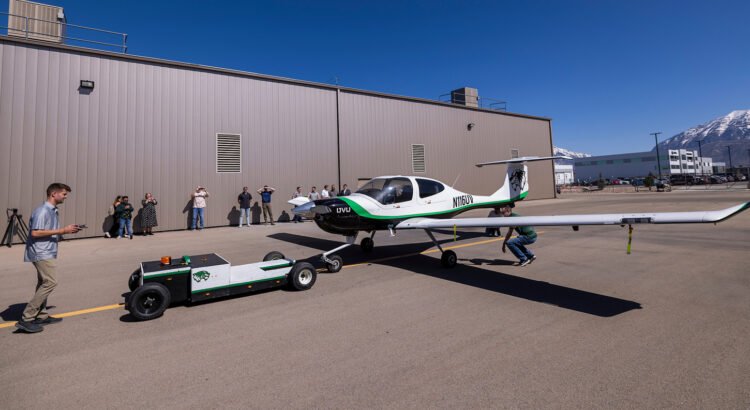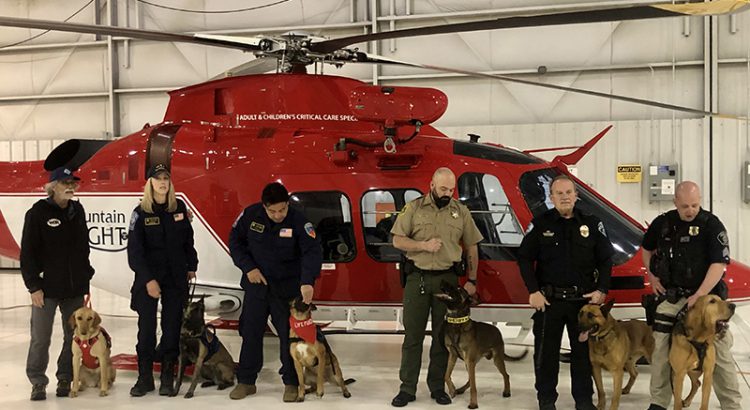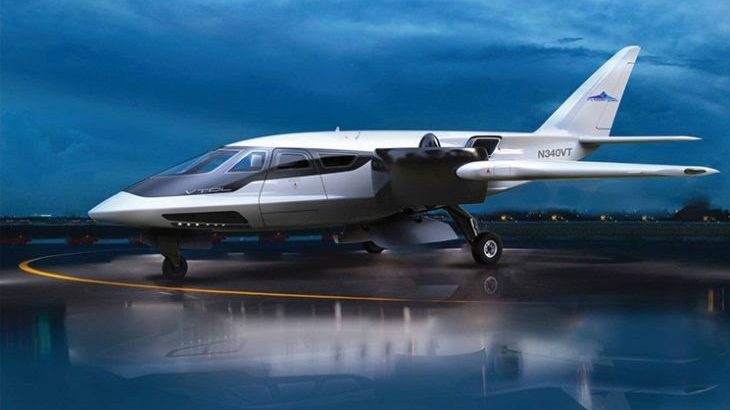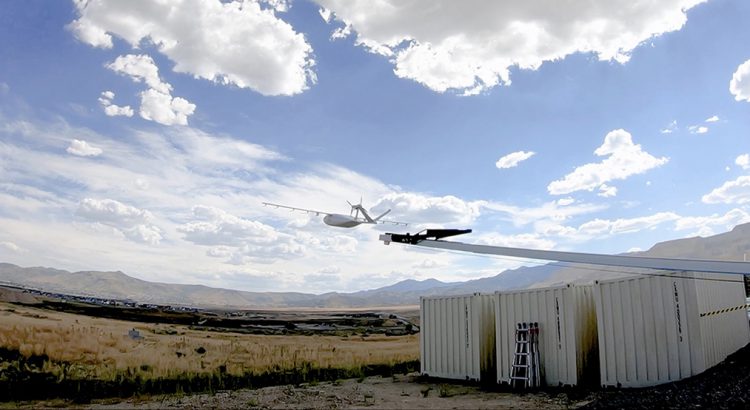As drone warfare reshapes global conflicts and autonomous aerial threats grow more sophisticated, Fortem Technologies last week officially opened a new state-of-the-art headquarters and manufacturing facility designed to meet surging demand for its counter-drone systems. The new 51,000-square-foot building in Lindon more than doubles Fortem’s previous capacity and marks a major milestone in the company’s […]
Utah
Utah Valley University Unveils Innovative Autonomous Aircraft Tug 2.0 at Provo Airport
Utah Valley University (UVU) has unveiled version 2.0 of its autonomous electric aircraft tug, a cutting-edge student-driven innovation designed to reduce fuel consumption, lower emissions, and enhance airport safety. Recently demonstrated at the Provo Airport, this next-generation tug aims to transform how aircraft move on runways. Aircraft Tug 2.0: What’s New? The redesigned prototype features […]
The Future of Air Mobility Takes Flight in Utah
Utah’s first air taxi demonstrations began Monday at the Salt Lake International Airport just weeks after 47G | Utah Aerospace & Defense (47G) signed a historic agreement with industry-leading electric aerospace company BETA Technologies. Supported by the Utah Department of Transportation (UDOT) and the Governor’s Office of Economic Opportunity (GOEO), the agreement creates a game-changing […]
Utah Launches Groundbreaking Air Transportation System
Utah’s aerospace and defense association, 47G, in partnership with the Utah Governor’s Office, the Utah Department of Transportation (UDOT), the Utah Inland Port Authority and industry stakeholders have launched a game-changing initiative called “Project Alta.” The Air Logistics Transportation Alliance (ALTA) is a collaborative partnership with a mission to establish an advanced air mobility (AAM) […]
Intermountain Life Flight Launches K9 Medical Air Transport Program for Public Safety Animals Needing Medical Care
In a unique collaboration with local veterinarians, specialized animal hospitals, and public safety agencies, Intermountain Life Flight, one of the nation’s premier medical transport programs, is launching a specialized operational K9 transport service. This new service will provide transport for operational K9’s needing emergent medical care or who are injured in the line of duty […]
Utah State’s Aviation Faculty Honored with Statewide Awards
Each year, the Utah Department of Transportation’s Aeronautics Division honors five individuals who have made exceptional contributions to the state’s aviation industry. This year, two of those award winners are faculty members in Utah State University’s Department of Aviation Technology. Shalyn Drake earned the Rookie of the Year Award. Before joining USU’s faculty as a […]
Utah Aeronautics Division to Recognize Five Awardees at Conference
Award nominations have been submitted, and the awardees have been chosen! The Utah Aeronautics Division has named five individuals who have demonstrated outstanding progress in making contributions to the aviation industry in the State of Utah. They will be honored at the Utah Aeronautics Conference Evening Reception on Thursday, June 22, 2023, at the Davis […]
Consolidation Announced Between Utah Aerospace & Defense Association and Deseret Unmanned Aerial Systems
Pictured above – The XTI TriFan 600 is a vertical takeoff and landing aircraft currently under development by XTI Aircraft Company, a company that has tested at Deseret UAS facilities. The Utah Aerospace & Defense Association (UADA) and Deseret Unmanned Aerial Systems (UAS) have announced that they are consolidating efforts to better collaborate and advocate […]
DroneUp Partners with Utah Division of Aeronautics for Air Mobility & Urban Planning
DroneUp, LLC, has announced it has joined the Utah Department of Transportation, Division of Aeronautics Utah Advanced Air Mobility Working Group. The objectives of this group are to study and strategize on policies around Advanced Air Mobility (AAM). AAM has the potential to unlock the key benefits for Utah, including economic growth; connecting underserved communities; […]
Zipline and Intermountain Healthcare Begin Drone Deliveries in the Salt Lake Valley
Zipline announced last week it is beginning deliveries of prescriptions and medical products directly to select Intermountain Healthcare patients’ yards in the Salt Lake Valley area, and that interested customers can sign up to use the service and place orders. âZipline’s Utah delivery system will expand gradually over five years and will eventually be capable […]






